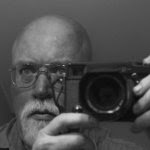The Impassioned Eye (2003)

“You really don’t have to know too much in order to be a photographer. What you need to do is simply to look.” Magnum Photographer Elliot Erwitt
The quote does not come from Henri Cartier Bresson, the subject of this documentary. It is just one of many sound bites made by the participants in this 2003 film by director Heinz Bütler “The Impassioned Eye”. The title is an appropriate one. The recurring theme here is that photographers must use their eyes to recognize geometry, texture, shape, and patterns. Not that we didn’t know this, but it does serve to focus our attention on just how important careful observation and a trained eye are to the photographer.
Over the past five years or so, I had gotten the impression that Henri Cartier Bresson was no longer interested in photography, that he didn’t like to talk about photography, and that he didn’t like interviews, especially about photography. He does mention in the film that he found drawing to have more possibilities. But after seeing one photograph taken in 1926 followed by another taken in 1966, it is entirely possible that, after at least four decades of photography, he simply tired of the medium. This film does not contradict my impressions. At no time in the 70 minutes does he appear to be interviewed. Nor is there an interviewer’s voice or a question asked. Cartier Bresson smiles and displays photograph after photograph, speaking to the camera in snippets (in French, translated by voiceover). There is no dialogue, no long discourse. The format reminds me of the book “Hemingway on Writing”, which is little more than isolated statements by Hemingway (from letters and fiction) about the writing craft. Perhaps Hemingway’s single most important advice to writers was
“Do not worry. You have always written before and you will write now. All you have to do is write one true sentence. Write the truest sentence that you know.” (The Moveable Feast, 1964)Cartier Bresson and other artists expound similar truisms throughout the film, and most contain a simple idea that should become second nature to the photographer. They hold more credibility here because of their source. Cartier Bresson makes point after point about photography, none too deep or too long, and none breaking any new ground. But worth listening to. I don’t believe I ever heard him say the words “The decisive moment”, but he does implore the listener at one point to “Seize the moment.”
At my first sitting, I came away from the film assuming that the parts with HCB were filmed in one or two afternoons, totally unrehearsed and unscripted. By the third sitting, I realized that he was wearing half a dozen different sets of clothes, and that this may have been filmed over a considerably longer time. It also becomes apparent that snippets were rearranged to make film flow better. The filming was obviously done near the end of HCB’s life. He appears to be in his mid-nineties but still spry. Oddly, Arthur Miller (who was only seven years younger than Cartier Bresson) appears to be closer to 65 in this film. The photographer died a year after the film was produced, the playwright a year later.
Unlike James Nachtwey's War Photographer, there are no depressing scenes of famine with emotionally wrenching music by Arvo Pärt. Rather, the film is upbeat with some lively Bach keyboard pieces. During the latter part of the film, piano music by Ravel creates a slightly more somber mood (all piano works are played by Angela Hewitt, one of my favorites). One interesting observation made was that Cartier Bresson’s impression of
Who should buy this DVD? Any photographer who is interested in this sort of non-studio photography. Any photographer who is not convinced that he/she knows all there is to know about photography. The statements are not as profound as they are logical and practical. Like an HCB book of photographs, the film is to be enjoyed over and over.


<< Home